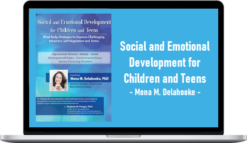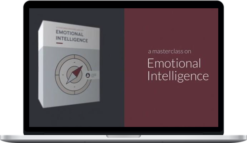NICABM – IFS And Complex Trauma: A Roadmap For Treatment
$197.00 $89.00
»Delivery: Within 21 days
Description
NICABM – IFS And Complex Trauma: A Roadmap For Treatment
IFS and the Neuroscience of Complex Trauma: A Roadmap for Treatment
If the extreme symptoms of complex trauma have ever left you unsure of what to do next with your client . . .
. . . integrating a parts approach from Internal Family Systems (IFS) might help.
You see, IFS is designed to help you uncover, build trust, and gently work with the parts of clients that drive extreme symptoms (like rage, fear, panic, or dissociation).
That’s why we called on Frank Anderson, MD to share how you can use IFS to confidently work with your client’s trauma response and bring healing to their most wounded parts.
IFS and Complex Trauma: A Roadmap for Treatment
In this workshop, Frank Anderson, MD dives into the neuroscience of complex trauma and its symptoms, and how that can inform your approach.
He’ll also share how you can blend Internal Family Systems (IFS) with other experiential approaches to help treat some of your client’s most extreme, wounded parts.
Here’s the agenda:
- How the neuroscience of complex trauma can direct a therapist’s decision-making
- Three categories of extreme trauma responses (and how to work with each)
- How memory reconsolidation can be key to emotional healing
- How a parts approach can help you manage countertransference when treating complex trauma
- Common roadblocks to treating complex trauma (and how to overcome them)
About Frank Anderson, MD
Frank Anderson, MD is a world-renowned trauma treatment expert, Harvard-trained psychiatrist, and psychotherapist. He specializes in the treatment of trauma and dissociation, and trains professionals in brain-based psychotherapy and the integration of current neuroscience with the IFS model of therapy.
His work has been praised and endorsed by many respected experts in the field, including Bessel van der Kolk, MD.
Dr. Anderson is the author of To Be Loved; Transcending Trauma: Healing Complex PTSD with Internal Family Systems; and Internal Family Systems: Skills Training Manual.
More courses from the same author: NICABM
Delivery Policy
When will I receive my course?
You will receive a link to download your course immediately or within 1 to 21 days. It depends on the product you buy, so please read the short description of the product carefully before making a purchase.
How is my course delivered?
We share courses through Google Drive, so once your order is complete, you'll receive an invitation to view the course in your email.
To avoid any delay in delivery, please provide a Google mail and enter your email address correctly in the Checkout Page.
In case you submit a wrong email address, please contact us to resend the course to the correct email.
How do I check status of my order?
Please log in to HealthcareCourse account then go to Order Page. You will find all your orders includes number, date, status and total price.
If the status is Processing: Your course is being uploaded. Please be patient and wait for us to complete your order. If your order has multiple courses and one of them has not been updated with the download link, the status of the order is also Processing.
If the status is Completed: Your course is ready for immediate download. Click "VIEW" to view details and download the course.
Where can I find my course?
Once your order is complete, a link to download the course will automatically be sent to your email.
You can also get the download link by logging into your HealthcareCourse account then going to Downloads Page.
Related products
Total sold: 1
Total sold: 2
Total sold: 3
Total sold: 4
Total sold: 4










